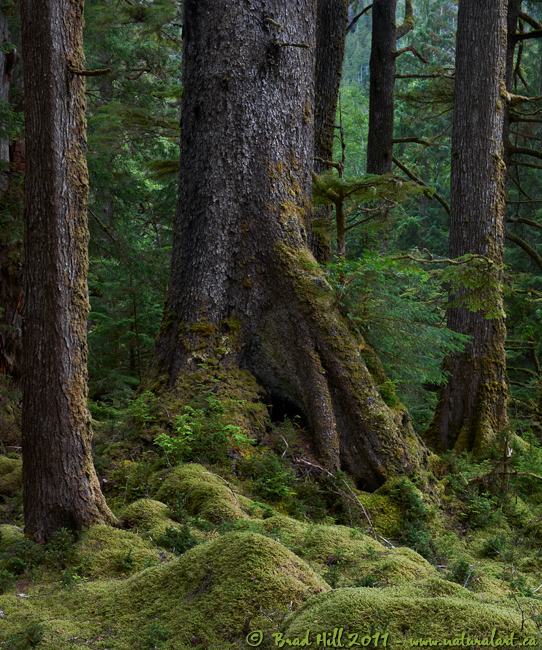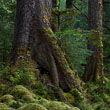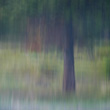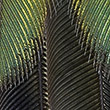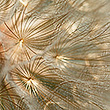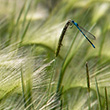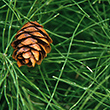Availability: Undetermined - Enquiries?
In the Field
Trees... Burnaby Island, Gwaii Haanas National Park and Marine Reserve, Haida Gwaii (Queen Charlotte Islands), BC, Canada. July 7, 2011.
While I AM a biologist (my formal training was in behavioural ecology and my research was on interspecific territoriality in two species of songbirds) as a wildlife photographer I often tend to think of trees in functional terms. You know...primarily as props or backgrounds or even perches in my images of birds or mammals. But on a trip to Gwaii Haanas National Park and Marine Reserve during the summer of 2011 I was struck by the beauty of the trees themselves. It's tremendously hard to NOT be awe-struck by the trees when wandering around in an old-growth rainforest! Yet treating them as subjects themselves - and figuring out a way to make them photographically (and even "graphically") interesting - was quite a stretch for this wildlife photographer!
It's my belief that understanding the nuances of light - I suppose you could say "seeing the light" - is critical for ALL types of photography. I think many wildlife photographers are so driven by a love of their subject(s) that they often under-emphasize the role of light - and the need to harness and control it during both image capture and image processing. In my never-humble opinion, it's my belief that paying close attention to the nuances of light AND learning the skills to work with it in one's digital darkroom are among the most critical skills any photographer can have.
Back to these Trees. This image is obviously about the the graphic and simple beauty of trees (and forest scenes in general). Texture and fine detail are critical in making this image work (if it does!) - and both are dependent on nuanced lighting. Although I shot this scene under overcast skies, the lighting was still directional enough to produce subtle shadows everywhere (on the left side of the 3 main subjects, in the moss, on the bark, etc.). My primary concern during the image capture phase of this creating this image was to ensure I had enough shadow AND highlight detail (there were highlights in the background) to work with during image processing.
What about the processing of this image? Well...I rarely "bracket" my exposures to produce multiple exposures destined for merging in a HDR (High Dynamic Range) image. Instead, I will select a SINGLE exposure and then convert it from raw multiple times (each at a different exposure) to produce my "raw" material for the final image. I then combine/merge the exposure variants (via layering and masking in Photoshop) to produce the final output like you see here. In this case I made 5 separate exposure variants (over a 2-stop range) for merging.
Why do I bother doing this? At the most basic level it's because I'm not convinced our cameras actually record scenes the way we see them, especially when it comes to the "balance" of light we perceive. Simply put, our image files require some "pushing around" before they appear the way we saw them in the field.
Why don't I simply use Shadow/Highlight tools to do the same thing? I find that my admittedly more labour-intensive method gives me the most control over the final look and feel of my image. And, I'm convinced I get "cleaner" images when I draw shadow detail out of a file at the point of raw conversion (i.e., with less noise) than if I attempt to draw shadow detail out by using Shadow/Highlight controls in Photoshop (on the 16-bit output from my raw conversion). Ultimately, I'm happier with the output using this method of post-processing - which is what really matters to me!
Behind the Camera
Trees... Burnaby Island, Gwaii Haanas National Park and Marine Reserve, Haida Gwaii (Queen Charlotte Islands), BC, Canada. July 7, 2011.
Digital Capture; RAW 14-bit format; ISO 200.
Nikon D3s with Nikkor 24-70mm f2.8 lens at 50mm with B&W circular polarizing filter. Supported on carbon fibre Gitzo GT2541EX tripod and AcraTech Ultimate ballhead. Cable release and mirror-up release mode used.
0.4 second exposure @ f11; no compensation from matrix-metered exposure setting.
At the Computer
Trees... Burnaby Island, Gwaii Haanas National Park and Marine Reserve, Haida Gwaii (Queen Charlotte Islands), BC, Canada. July 7, 2011.
RAW Conversion to 16-bit TIFF, including first-pass/capture sharpening using Phase One's Capture One Pro 6. Five raw conversions varying in exposure settings over a 2 stop range - from -1.8 stops from base exposure (for distant forest view to the right of the largest tree) thru to +0.2 stops from base exposure (to extract shadow detail in the lower portion of the trunk in the largest tree).
Further digital corrections on 16-bit TIFF file using Adobe's Photoshop CS5. Photoshop adjustments including blending of 5 exposure versions, selective tone curve adjustment, selective colour saturation and desaturation, and final sharpening for web output.
Conservation
Trees... Burnaby Island, Gwaii Haanas National Park and Marine Reserve, Haida Gwaii (Queen Charlotte Islands), BC, Canada. July 7, 2011.
Not Applicable. Happily, Gwaii Haanas National Park and National Marine Reserve is one of the few island groups in the world that receives protection from ocean bottom to mountain peak! Hurrah!












